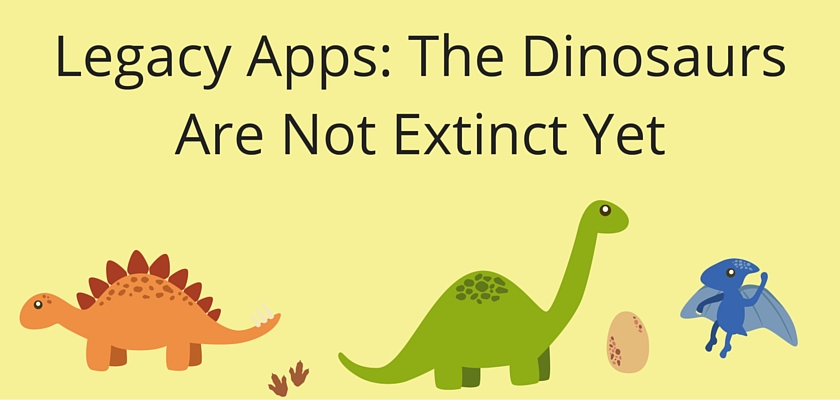Have You invested a lot in your applications and want the full return on your investment? Well, You do not necessarily need to replace your legacy apps, but you do need to manage them.
It’s tempting to dismiss legacy applications as dinosaurs–outdated and doomed to extinction, but don’t be too quick to write them off. Being a dinosaur is not bad at all.
Dinosaurs first appeared more than 230 million years ago and they dominated the earth for 135 million years. Not a bad run. Modern humans, on the other hand, have been around for less than 200,000 years. So don’t diss the dinosaurs. It’s the same with application software. Being old does not necessarily mean it’s outdated; it could just be that it’s working.

Have you invested a lot in your legacy applications and want to get the maximum return on that investment? Well, You don’t necessarily need to replace them, but you do need to manage them and realize that value.
Creating The Right Environment
If you are managing your applications on a legacy infrastructure, you might feel like you’re fighting an uphill battle. Effective management requires network visibility so that you can locate your applications and monitor their activity and security status. This can be hard to achieve on a legacy infrastructure.
In both the public and private sectors, continuous monitoring is replacing periodic assessment as the standard for cybersecurity and IT management. A number of products and services are available to do this, but it is easier to do with an updated network to support these capabilities.
You also want to fully support your employees, customers and partners by supporting delivery of services over a variety of platforms, from desktops and browsers to rapidly-evolving mobile devices. This also requires a modern networking infrastructure.
Fortunately, you do not need to maintain a legacy infrastructure to continue taking advantage of workhorse apps that are still pulling their weight. You can have the best of both worlds.
App Publishing
What you need is to be able to make your applications available quickly for multiple operating systems on any type of physical or virtual device. The cloud can help your workers take full advantage of legacy applications, running multiple instances simultaneously and making them available anywhere on any device, just as they would run on a traditional computer.
This does not require expensive and time consuming rewriting. App publishing can create a presentation of the application that runs on a normal operating system to be streamed, so that it does not have to be actually virtualized. The legacy app becomes available via the cloud and is streamed as if it were being provided through software-as-a-service. It can be accessed through a browser or mobile device even when it is running on a desktop OS.
App presentation and publishing means that taking advantage of virtualization does not have to be costly and you do not have to depend on future savings to take advantage of cloud computing now.
Evolution
Even though dinosaurs are no longer with us, they did not really disappear. Some of them evolved into the birds that fill our skies today. In the same way, some of your legacy applications—however useful—will one day need to evolve to fully take wing.
If you are taking advantage of the cloud, virtualizing these applications can be a cost-effective way to bring them into the modern world when it is time for them to move on. The economies of scale offered by the cloud can help offset the investment of upgrading truly outdated software when necessary, helping you to fully realize a return on your application investments.
 William Jackson is a freelance writer with the Tech Writers Bureau [www.techwritersbureau.com]
William Jackson is a freelance writer with the Tech Writers Bureau [www.techwritersbureau.com]
Follow him on Twitter @TheCybereye.


